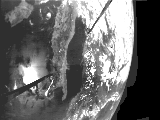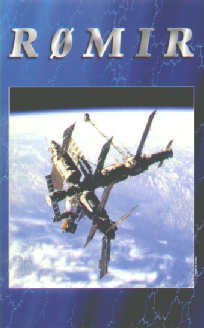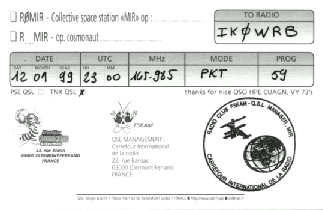


Italy's picture, taken by amateur satellite Oscar 22 |
Perhaps not many people know, outside ham community, that there are
several satellites designed and put into earth orbit by radio
amateur associations. These satellites carry beacons and transponders and can be used much like orbiting repeaters. A few satellites work in FM, but most of them have linear transponders that receive SSB signals in one band and re-transmit it on another band. Most used bands are in the VHF and UHF range, but there is also some satellites using HF bands. As an example, RS-12 can be worked with a normal HF rig, with usual antennas, because it receives on 15 meters band and transmit on 10 meters band. Up to now there are no geostationary amateur satellites. Their orbits range from about 1000 km to more than 40000 (in the farest point) and earth stations are required to move their antennas to track the path of the satellite. Low orbit satellites can be worked also with omni-directional antennas. Also, since the satellite is not always visible, it is necessary to compute the time of the passing. QSO range depends on the orbit heigth. With low orbit satellites it is possibile to talk up to about 1000/2000 miles, but with higher orbit ones it is possibile to reach a whole emisphere. Some satellites have digital transponders on board, enabling digital QSO and BBS data exchange. Shuttle missions carry sometimes ham equipment and in this case astronauts talk with ham operators on earth, both randomly and following a schedule, as in SAREX educational program. MIR space station also has amateur radio equipment and time to time crew members make QSO with someone on earth. MIR orbit is very low, about 400 km, so the pass lasts only a few minutes. On board there is also a packet radio bulletin system. During January 1999 I made a digital QSL with the MIR packet station. Contact with MIR was done using the following station (far from optimal): RTX Icom W2E, Amplifier 35 Watt, collinear vertical antenna, MFJ Dsp packet controller, 486 PC with simple terminal program. |
 |
 |